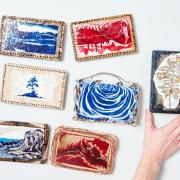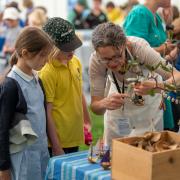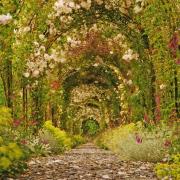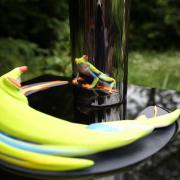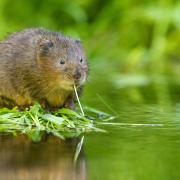He’s been sworn to secrecy for months but now our wildlife columnist James Chubb can reveal the story behind a miracle event that took place on the Seaton Wetlands reserve – the first 18 avocet chicks to be born in the county.
I’ll let you in on little secret; I am absolutely terrible at keeping secrets. It’s always been an Achilles heel, but recently it has been tested to the limit.
I was on the first day of a family holiday in Anglesea when Tim sent me a photo. It was the one published here of two avocets getting to know each other.
‘I presume you know about this on Seaton Wetlands?’
His comment had me choking on my breakfast and suddenly the holiday couldn't end quickly enough! Absolutely no offence intended toward my family, but this was evidence of potentially the most significant moment in my conservation career.

Avocet breeding in Devon for the very first time!
And so began a three-week vigil with all staff and volunteers sworn to secrecy. When nesting was confirmed I contacted a colleague in RSPB for guidance on how we should approach this breeding effort. Usually my preferred option is to share good news like this and help people enjoy a rare sliver of positivity. However, there are still a few remaining individuals for whom the threat of a custodial sentence for possessing this Schedule 1 species’ eggs is insufficient jeopardy and they continue to plunder birds’ nests for their own unethical hobby. I was advised to maintain absolute silence until hatching and this was followed to the letter.
I’ve never felt such stress before!
With no way of getting near the nest location without transgressing the Wildlife & Countryside Act myself, it was behavioural clues which pieced together the bigger picture.

The avocets had chosen a sparsely vegetated small island on the lagoon to nest and in the first fortnight we were cursed with neap tides, a heat wave and a rapidly evaporating water body which was supposed to be protecting the birds!
As soon as the tides were high enough I tinkered with the sluice and valve system to increase levels and surround the island with brackish estuary water.
While one adult sat tight in the nest, presumably on eggs, the second adult - usually the male - would stand guard nearby and bravely chase off any other bird which came close. It was this hugely exhausting behaviour which confirmed that they must surely be protecting eggs.
It was 1847 when this species became extinct in the UK, being hunted to oblivion for their feathers which were sought after for the millinery trade. Back then the population was restricted just to the east coast of England and before this week there had never been a record of avocets breeding in Devon.

This may seem odd as the Exe Estuary is well known as an incredible site for its winter flock of avocet which now number well over 600 birds, but before now they have not found the habitat for breeding that they require.
Black Hole Marsh was created in 2008 and avocets were always the top target for breeding.
There I was with the target finally here, sitting tight on eggs; a thick shroud of secrecy protecting them from egg collectors and a modest fringe of water protecting them from some predators. So much could still go wrong, much of it directly as a consequence of my actions, so it was a twitchy time before Monday, June 26 at 9:45am when Robin, a visiting wildlife photographer, dashed in to the Discovery Hut to tell me: ‘They’ve hatched!’
I sprinted to the viewing platform. Robin had photographed the male bird carrying a large fragment of eggshell away from the nest and there was no way I was going to miss the first glimpse of these chicks as the adults brought them down to the water to feed - something avocets do after about an hour of hatching.

It was a furiously hot day and I was somewhat sun-kissed by 3:30pm when two chicks finally appeared from the nest and slid their way down into the water. I hadn't moved from the spot. The female headed back to the nest after a short time spent feeding and it appeared that we were not done at two.
The tiny chicks were unable to climb back on to the island and into the nest, so the male bird spent the entire night sheltering them both under his wing, standing in the shallow water beside the brooding female. Seeing them the following day was a huge relief.
By 11:30am the third and final chick had appeared from the nest and Devon’s first ever avocets were busy feeding in the shallow salty water.
The chicks are seemingly unconcerned as to where the parent birds are, feeding freely over a large area of muddy shore and shallow water. The adult birds feed as much as they can between bouts of dog fighting in the air above the lagoon, for such a slight bird, they are ferocious guardians.

It's impossible to say if there will be a happy ending to this story, avocet have a 40 per cent success rate at fledging young, and this could well be a young pair who have not attempted it before. Of the three chicks, losing just a single one and successfully fledging two would be an amazing achievement by the pair.
But one thing is certain, they're out of the eggs now, on a site designed to bring people and birds close together with no adverse effects, so I can finally freely encourage you to pop down to the Axe Estuary and enjoy this new feature of the Devon summer!

















